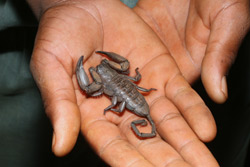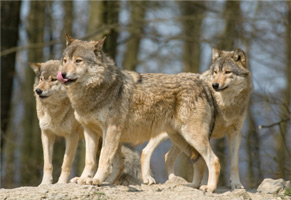 From the outset, the term ”Innocent killers” makes us think of predatory animals and carnivores, though a little more thought may lead us to conclude that we might also apply it to some kinds of plant, and even to people. But if you really want to know just how diverse the world of predators is, and to break down the stereotypes surrounding them, then this Exhibition is for you.
From the outset, the term ”Innocent killers” makes us think of predatory animals and carnivores, though a little more thought may lead us to conclude that we might also apply it to some kinds of plant, and even to people. But if you really want to know just how diverse the world of predators is, and to break down the stereotypes surrounding them, then this Exhibition is for you.
The Exhibition offers an insight into the fascinating world of predators, showing the mechanisms underpinning predation, and reminding us that the earliest humans were first and foremost predators, just as we are today.
So come along and soak up the atmosphere of the African savannah, the Amazon Rainforest, the North American Prairies and our own European forests. As you pass among the trees, a tawny owl flies low overhead, before you become surrounded by a pack of wolves howling in the twilight. Hear how a pride of lions brings down its prey on the African savannah, and feel the breath of the jaguar at your back in the heart of the jungle. If you make it through to the morning, your new day will be welcomed in by the honking of a skein of geese overhead, and by the soothing birdsong following a night “on the edge”.
 Do you know that predators are out stalking everywhere, equipped with sharp fangs and talons, beaks and poison glands? Their prey flees before them, or else hides itself using perfect camouflage. If attacked, these would-be victims fight for their very lives. This is how it has been since the beginning of time, in the arms race between predator and prey. Methods of attack, defence and escape are being honed all the time, with prey coming up with solutions like spines, armour or camouflage. Even the plants have their predators: insect-eating plants drawing nourishment from the digestion of prey captured in their deep, slippery, sweet-scented and exit-free traps. All of this is shown in detail thanks to the exhibition mounted by the Museum and Institute of Zoology of the Polish Academy of Sciences.
Do you know that predators are out stalking everywhere, equipped with sharp fangs and talons, beaks and poison glands? Their prey flees before them, or else hides itself using perfect camouflage. If attacked, these would-be victims fight for their very lives. This is how it has been since the beginning of time, in the arms race between predator and prey. Methods of attack, defence and escape are being honed all the time, with prey coming up with solutions like spines, armour or camouflage. Even the plants have their predators: insect-eating plants drawing nourishment from the digestion of prey captured in their deep, slippery, sweet-scented and exit-free traps. All of this is shown in detail thanks to the exhibition mounted by the Museum and Institute of Zoology of the Polish Academy of Sciences.
On display are jaguars and wolves, dingoes and leopards, crocodiles and lizards, as well as birds of prey. On the walls, we see camouflaged crab spiders and huge scorpions preparing to sting. And there are insectivorous plants to admire, living praying mantises, bird-eating spiders and piranhas – all just waiting to deal the final blow to their prey, as well as the prey itself, girding up to defend itself against the attack. How those relationships and interactions between the two sides look is the issue our exhibition aims to present in detail.









